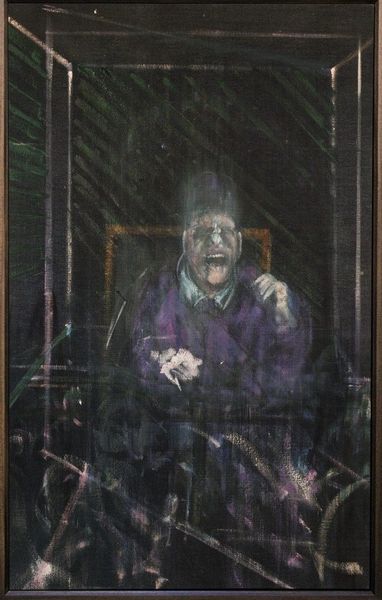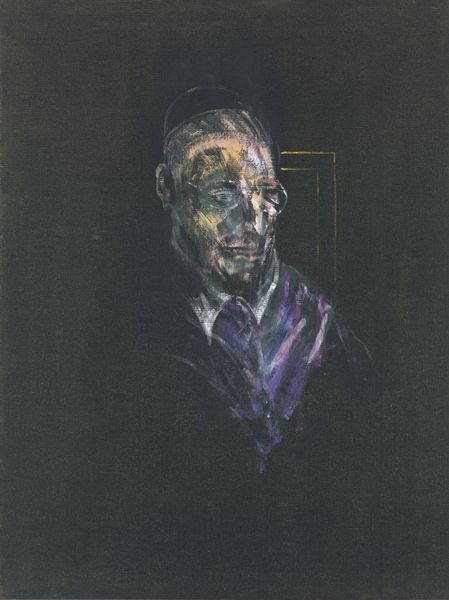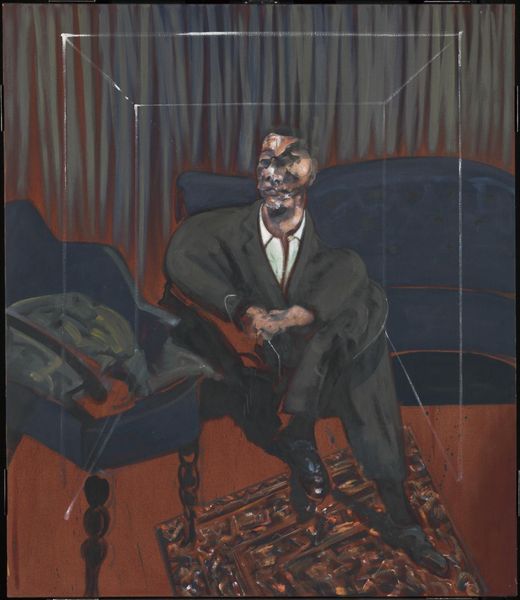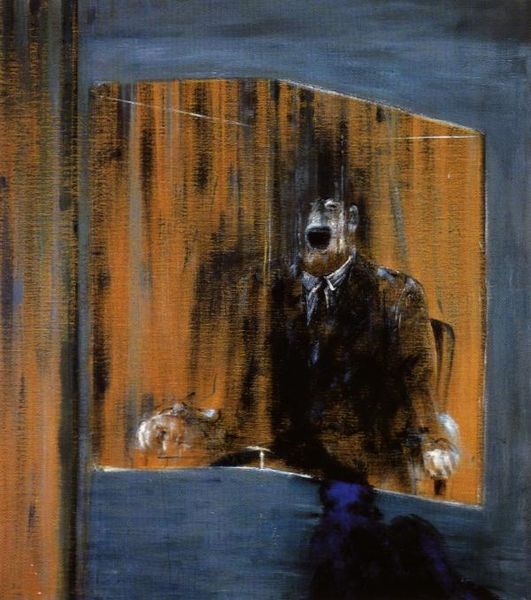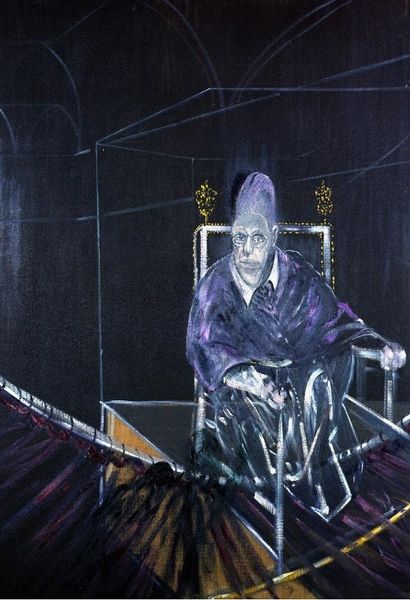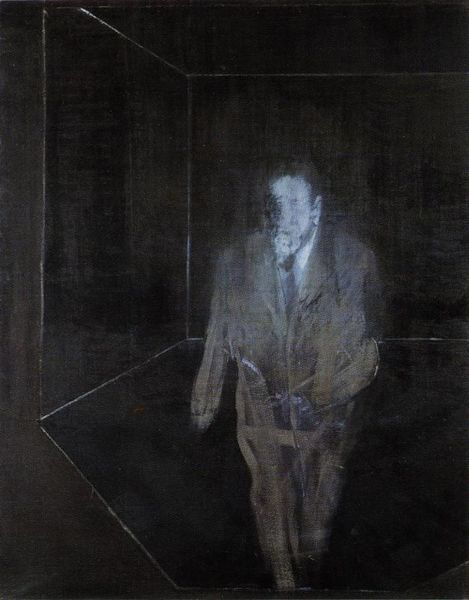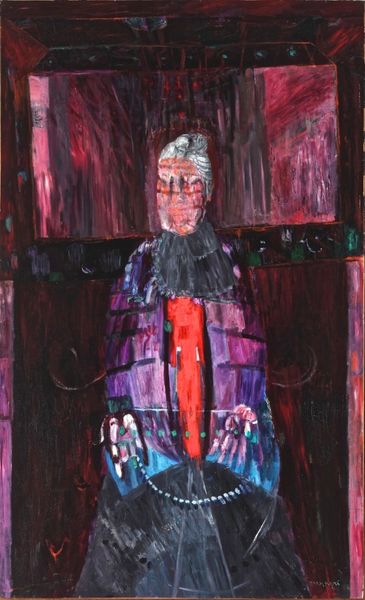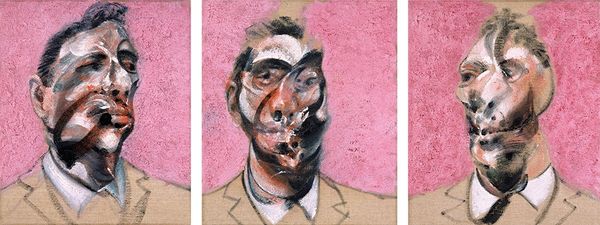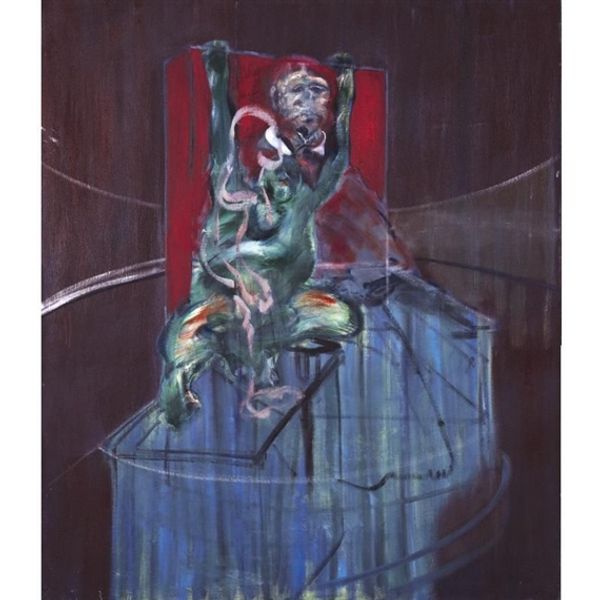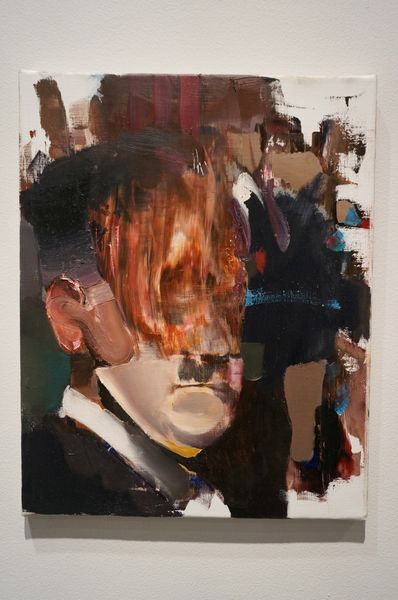
Dimensions: 66.1 x 56.1 cm
Copyright: Francis Bacon,Fair Use
Editor: This is Francis Bacon’s “Study for a Portrait” from 1952. Painted with oil on canvas, this piece…it just screams at you. Figuratively and, well, literally! The distorted face, the harsh brushstrokes, the claustrophobic space... It feels viscerally unsettling. How do you interpret this work? Curator: The visceral impact you describe is central to understanding Bacon’s material practice. Look at the paint itself – how he layers and distorts it to create that screaming mouth. It’s not just representation; it’s a manipulation of the materiality of paint to evoke a physical, bodily response in the viewer. He’s using industrial production techniques applied to fine art, blurring the line. The act of applying paint mimics, in a way, the violence depicted. Think about the slaughterhouses he often referenced; that physicality pervades his process. Editor: So, the *way* he paints is as important as *what* he paints? The physicality is crucial. Curator: Exactly! And consider the socio-economic context of post-war Britain. The austerity, the rebuilding, the trauma – all seep into his handling of materials. Is this distortion only visible as something expressionistic, or does the materiality itself express a feeling? The canvas isn't just a surface; it's a site of struggle, a place where Bacon grapples with the weight of existence. And this labour leaves its traces through the material! Editor: It's interesting how he doesn’t try to hide the process. You see the raw application of the paint, almost like exposed wounds on the canvas. I hadn’t really thought about how the historical context could inform something like the material qualities. Curator: Precisely. Seeing art through the lens of materiality pushes us to consider art making as labour, connecting artistic practice to wider economic and social realities. Hopefully next time you visit another expressionist artwork, you can feel, see and think about all these implications on materiality. Editor: That definitely gives me a new perspective! I'll be paying much closer attention to the materials and the process from now on. Thanks.
Comments
No comments
Be the first to comment and join the conversation on the ultimate creative platform.

